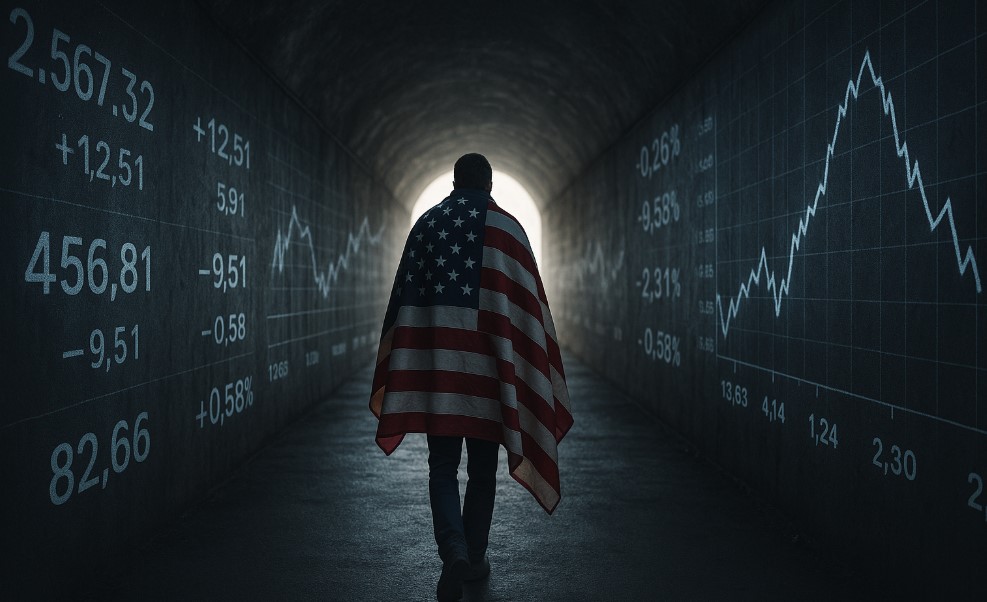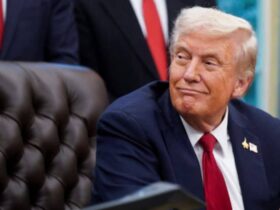This Wednesday, the United States marks 35 days of partial closure of the federal government, surpassing the historical record of duration recorded during the previous administration of Donald Trump.
The situation keeps the country with limited administrative functions, preventing the publication of essential economic data and directly affecting the monetary policy decisions of the Federal Reserve (FED), as well as the review process of new exchange-traded funds (ETFs) of digital assets.
According to reports from the Department of Labor, no official economic information will be published until the government shutdown ends, which would imply a “statistical blackout” that, in the worst case, could exceed 60 days.
This includes the suspension of monthly employment reports, unemployment rate, consumer price indices (CPI) and producer price indices (PPI), retail sales figures and home construction data.
The closure, which began on October 1 due to the lack of budget agreement in the US Congress, has left the FED in a particularly delicate position: it must evaluate possible interest rate cuts “in the dark”, without having the macroeconomic data that usually guides their decisions.
For the CME Group derivatives market, even in the midst of uncertainty, there is a 68% probability that the FED will continue to reduce interest rates on December 10, when the organization meets again. The FedWatch tool believes rates are likely to drop to 3.5% annually. Although there is also a 31.9% chance that they will remain in the current range, of 3.75%-4.0%.


A closure that affects markets and monetary policy
Speaking to CriptoNoticias, bitcoin analyst André Chalegre points out that, historically, US government shutdowns have not had a sustained negative impact on risk assets.
«Although it seems something negative for risk assets, normally after these closures (shutdowns) we see that the S&P 500 and other risk assets—including bitcoin—tend to perform well, that is, a positive return, an increase, both after and even during the closure,” he explains.
However, Chalegre warns that the current context is different, due to the fragility of the labor market and dependence on the FED of that data to justify new measures.
“The implications that occur with the closure are closely related to the realization of interest rate cuts and the lack of information, with which the FED is left without direction because it does not have all the market data,” he adds.
In recent months, labor reports showed signs of weakening, which led the FED to execute two consecutive rate cuts despite the lack of complete information.
“That caused the market to panic and there was no possibility of not making the rate cut in the first reduction that we had two months ago,” recalls the analyst, highlighting that Jerome Powell, the president of the Federal Reserve, relied on private data and alternative sources “even with the government closed.”


The FED without a compass and the markets “in dark waters”
With 35 days left until the next meeting of the Federal Open Market Committee (FOMC), the outlook remains uncertain.
“Now we are entering darker waters, because this is the longest closure in history (…) we need this closure to end because more data is required so that the government and the committee can reach a consensus on whether or not there will be a rate cut,” warns Chalegre.
The analyst also emphasizes that the US financial system is showing signs of stress due to lack of liquidity, which has led banks to resort massively to repurchase operations, known as “repo«.
“In reality, such a high liquidity injection has not been seen in five years, totaling 72.3 billion dollars in just two days,” he highlights. In fact, CriptoNoticias reported that The US FED injected 125 billion dollars into the economy through these repos in just one week.
These operations imply that banks exchange bonds and other securities for cash, in a kind of indirect support of the financial system. “The market interprets this as a sign that it is imminent that, even with high rates, the FED could start buying assets before the end of 2025, that is, there could be a change even before the end of the year,” he points out.
Bitcoin and ETFs await clarity
In parallel, the prolonged government shutdown is also affecting the evaluation process of cryptocurrency ETFs filed with the Securities and Exchange Commission (SEC).
As reported by CriptoNoticias, the lack of personnel and administrative paralysis have delayed the approval of several financial products linked to cryptocurrencies, limiting the development of the institutional market around digital assets.
Despite the uncertainty, Chalegre believes that the environment could become favorable for bitcoin if the FED confirms a turn towards more expansive policies.
“This is an ideal scenario for us: the best thing would be for the closure to end as soon as possible, because although historically it has had a positive effect, we need to arrive at the next meeting with clearer data so that the FED makes more precise decisions about everything it will do, whether or not to cut rates,” he says.
With more than a month of institutional paralysis and no clear signs of agreement in Congress, the United States faces an unprecedented information blackout. The absence of official data prevents evaluating the true state of the economy and complicates monetary policy decisions. while financial markets navigate between caution and expectation.
History suggests that risk assets could find fertile ground once normalcy is restored. However, as Chalegre warned, “we are now in uncharted territory.”






Leave a Reply